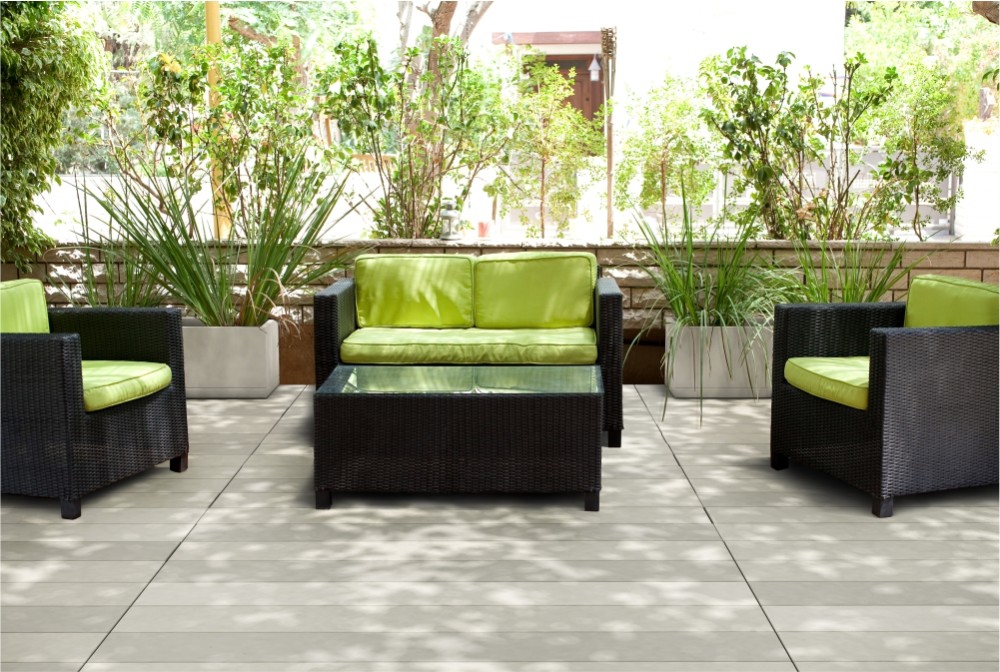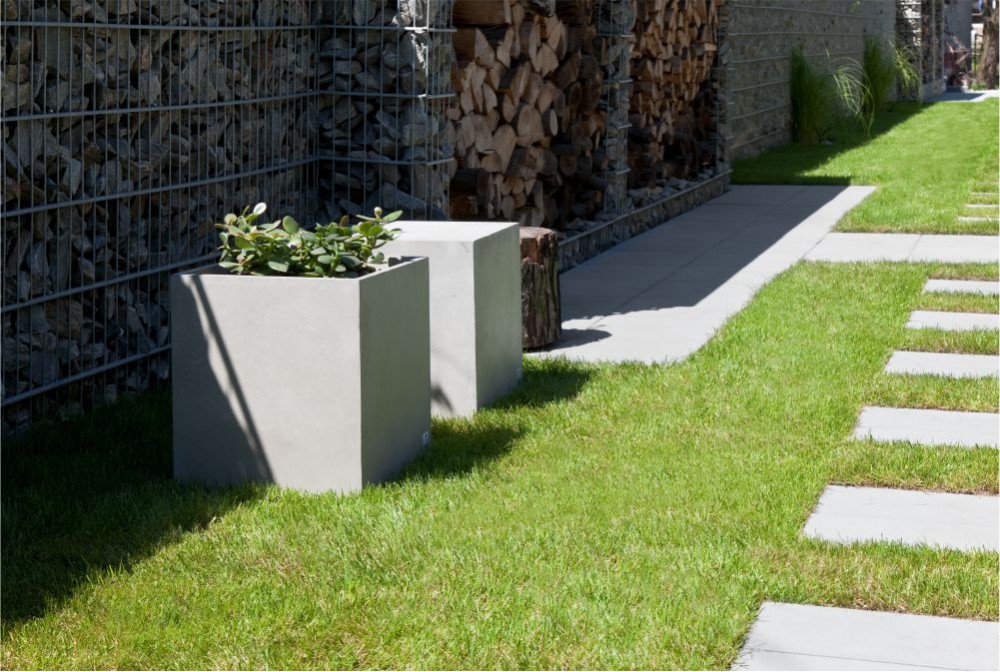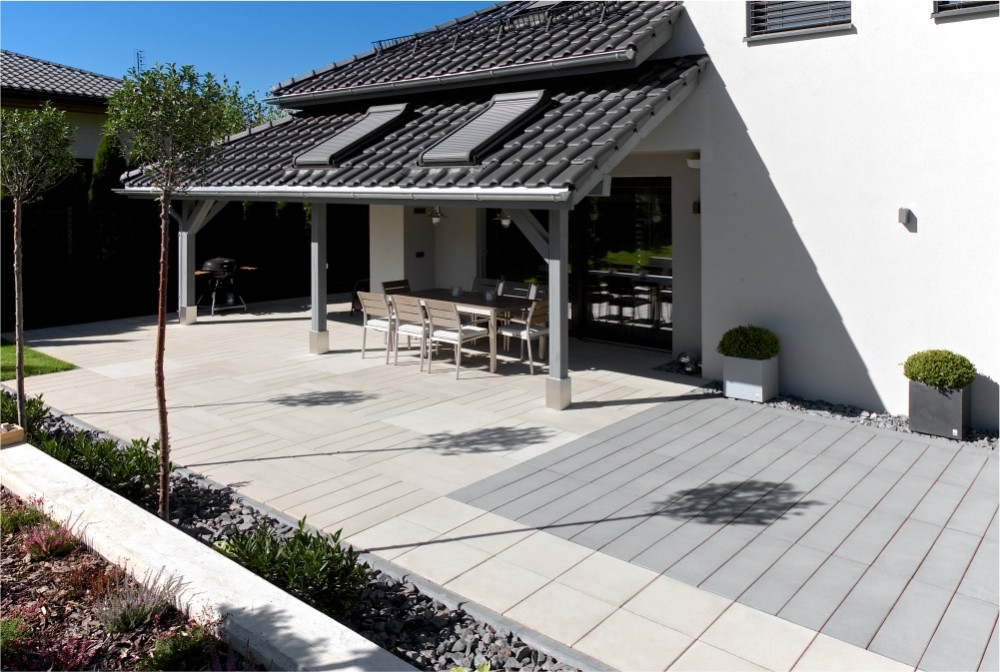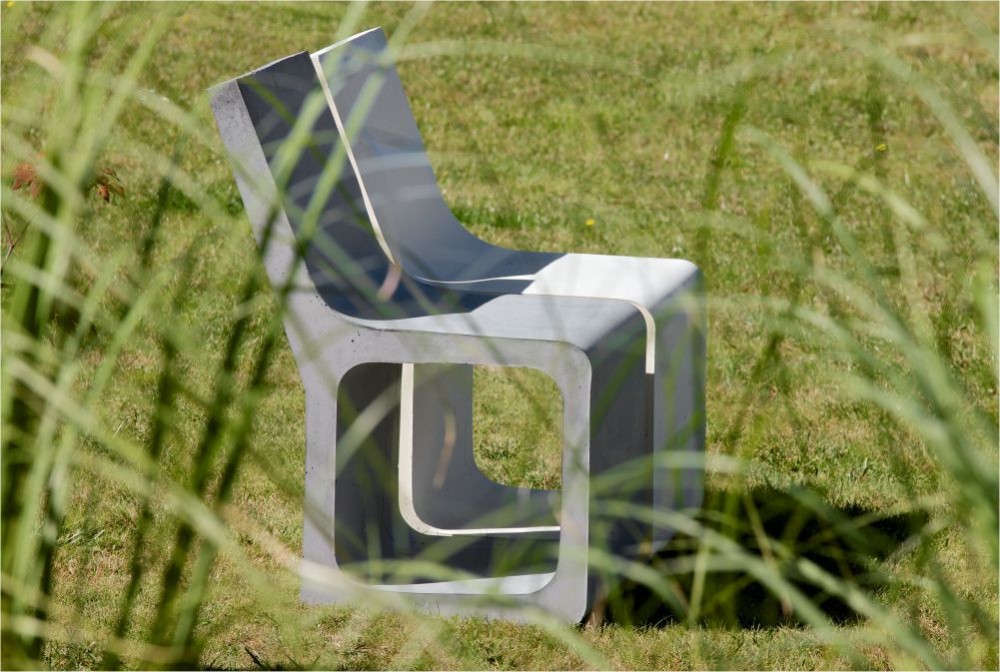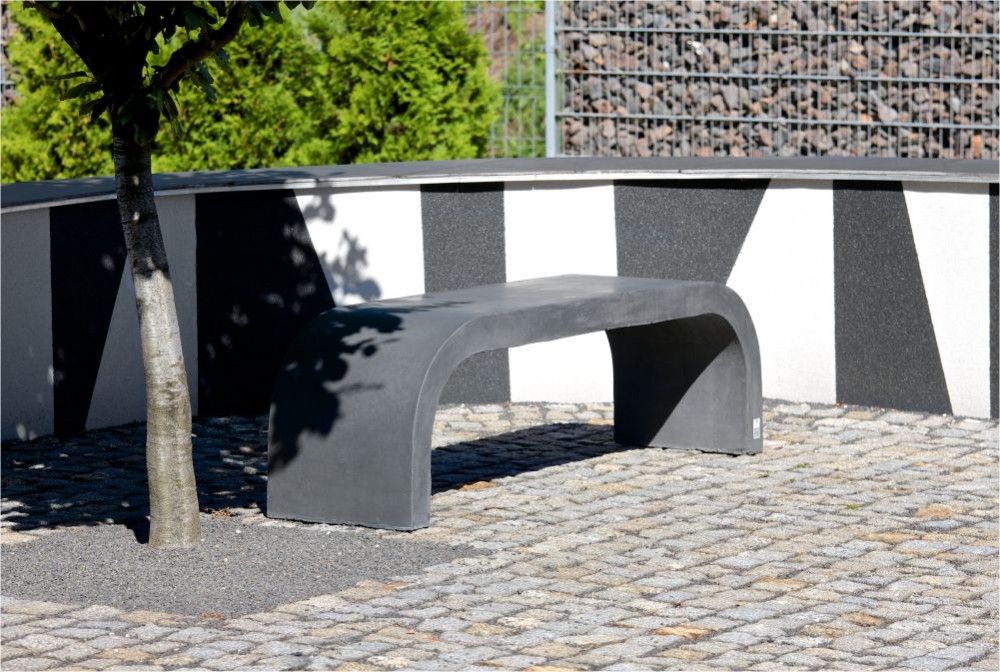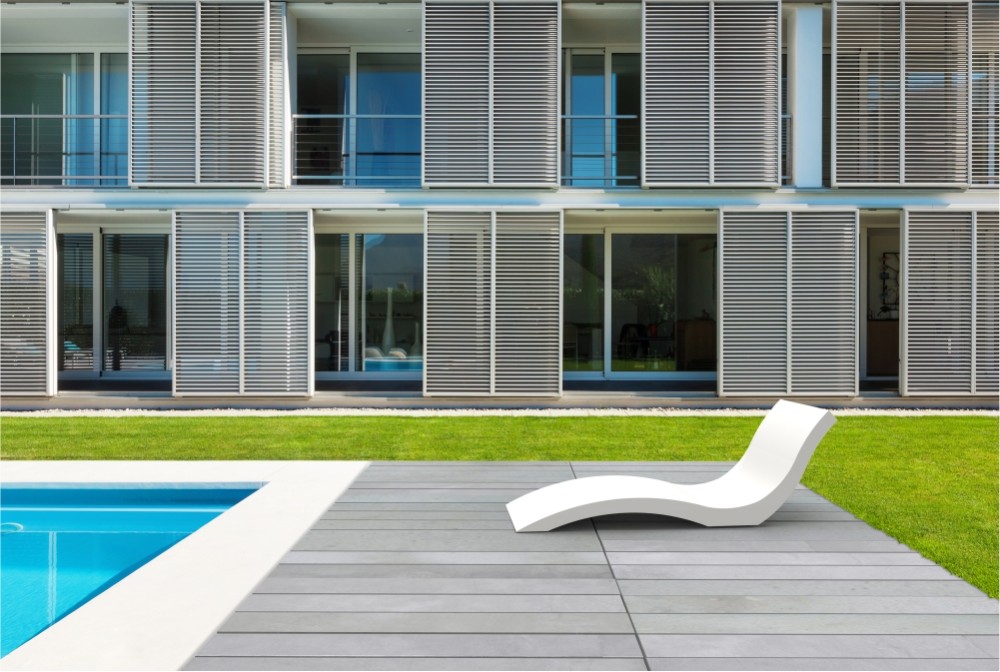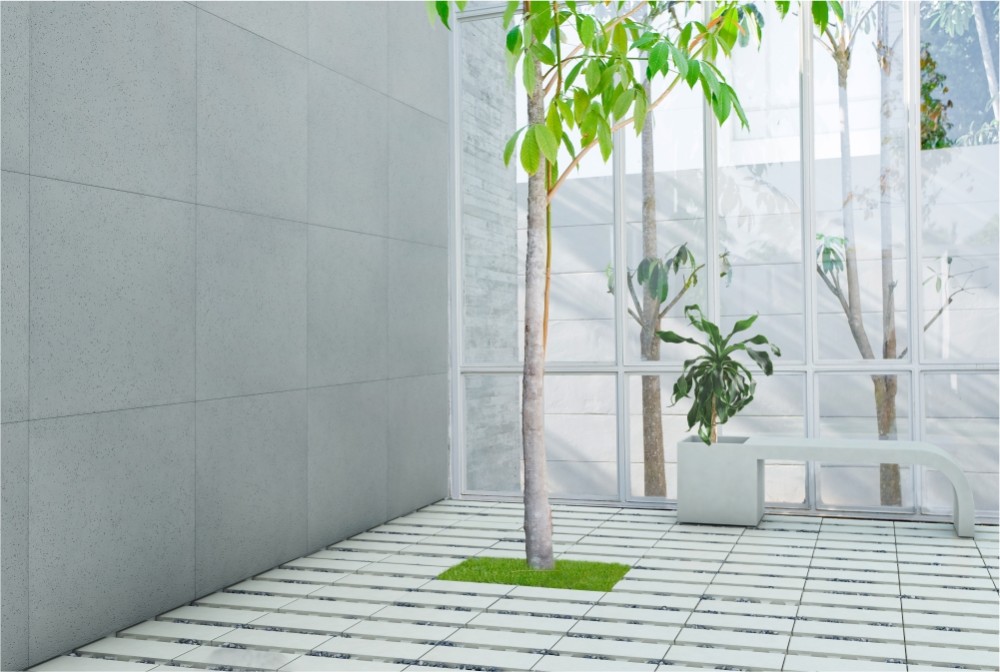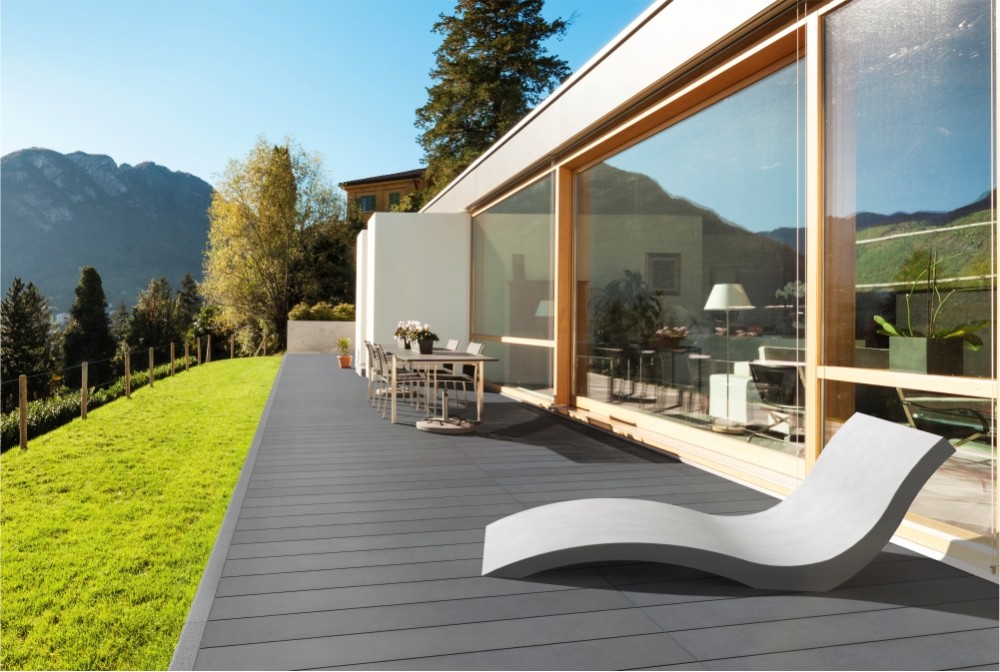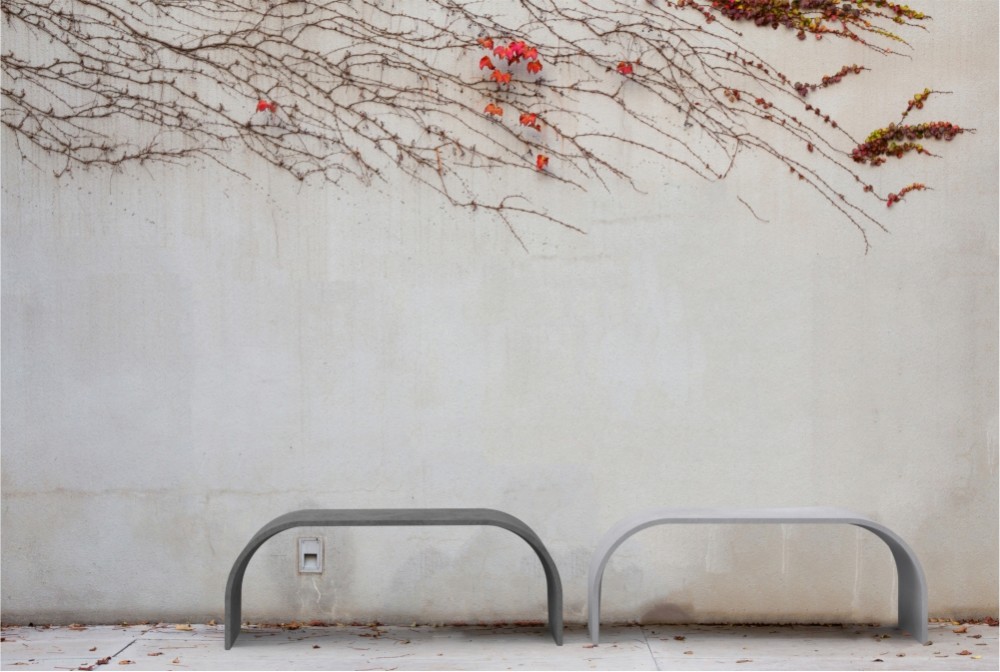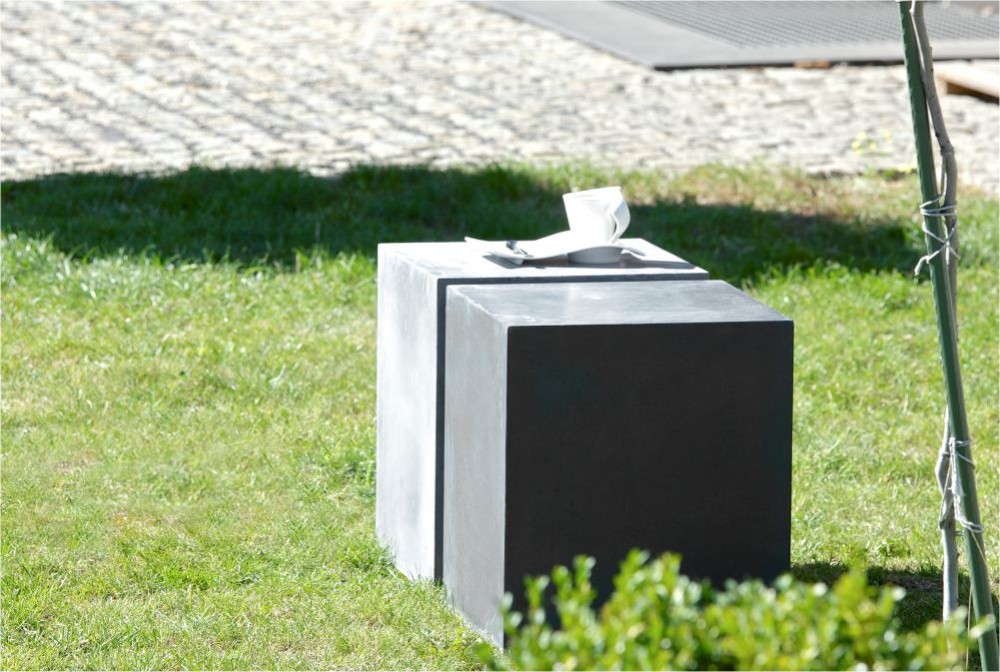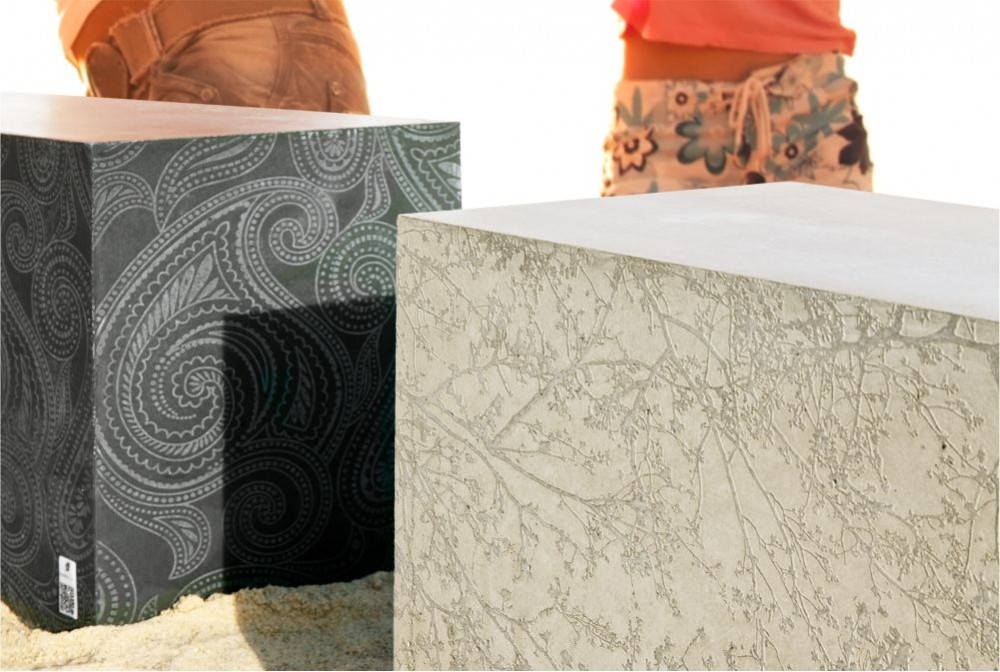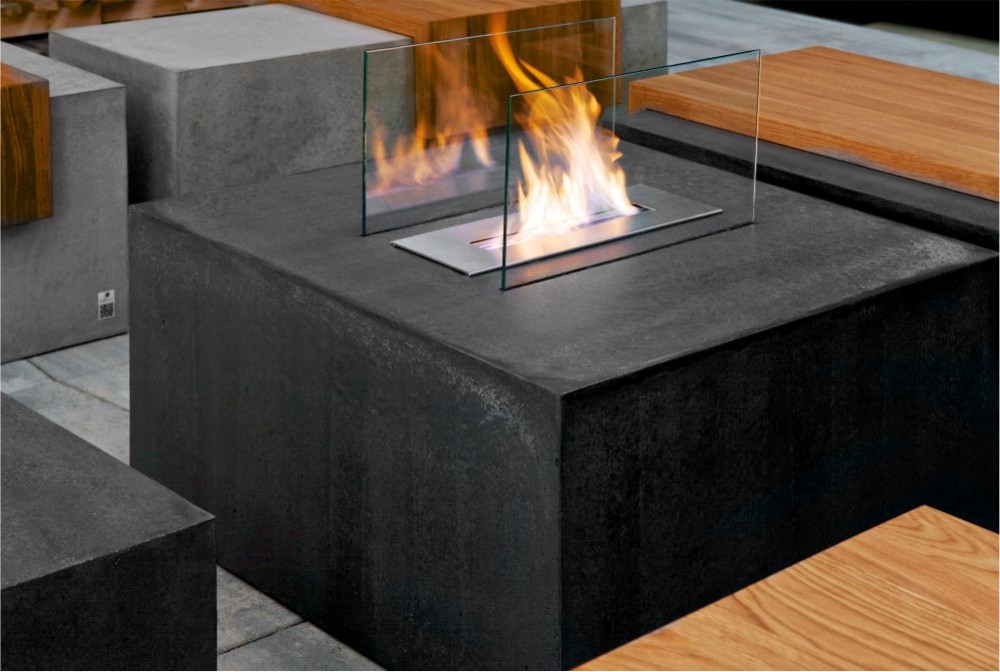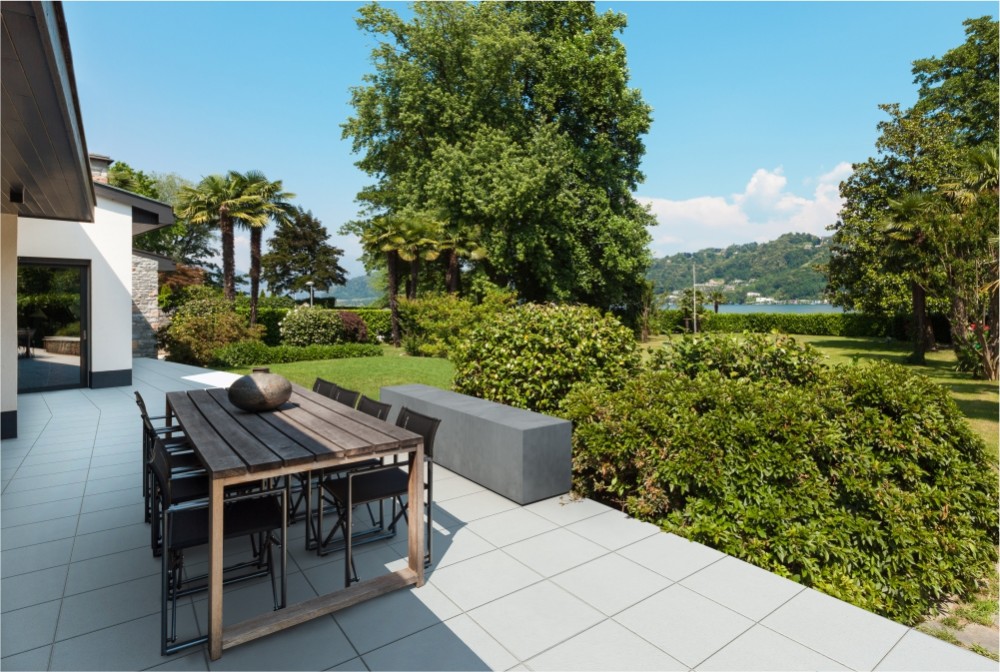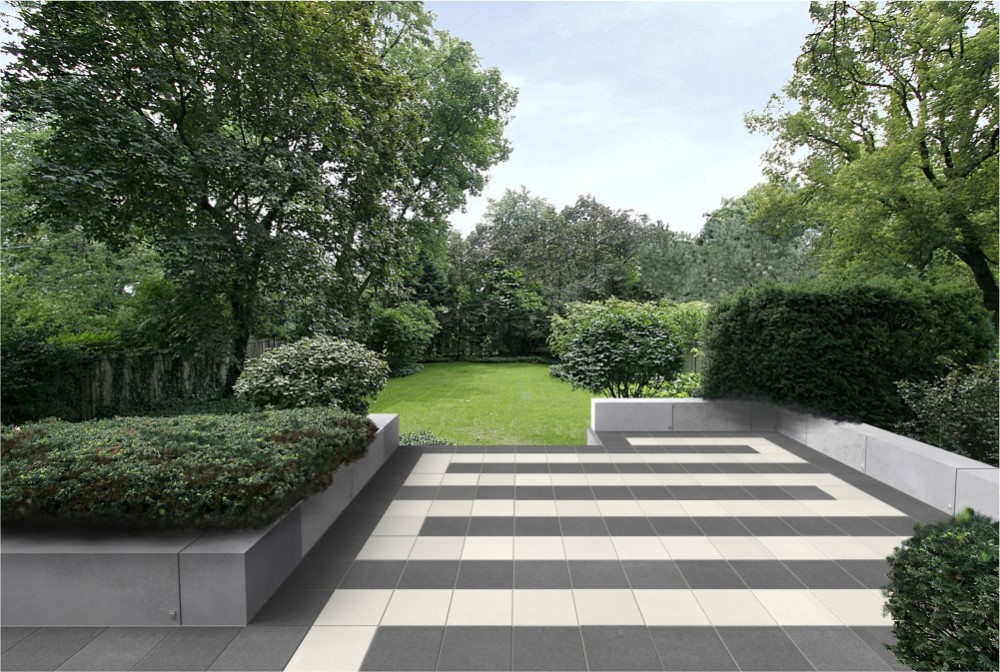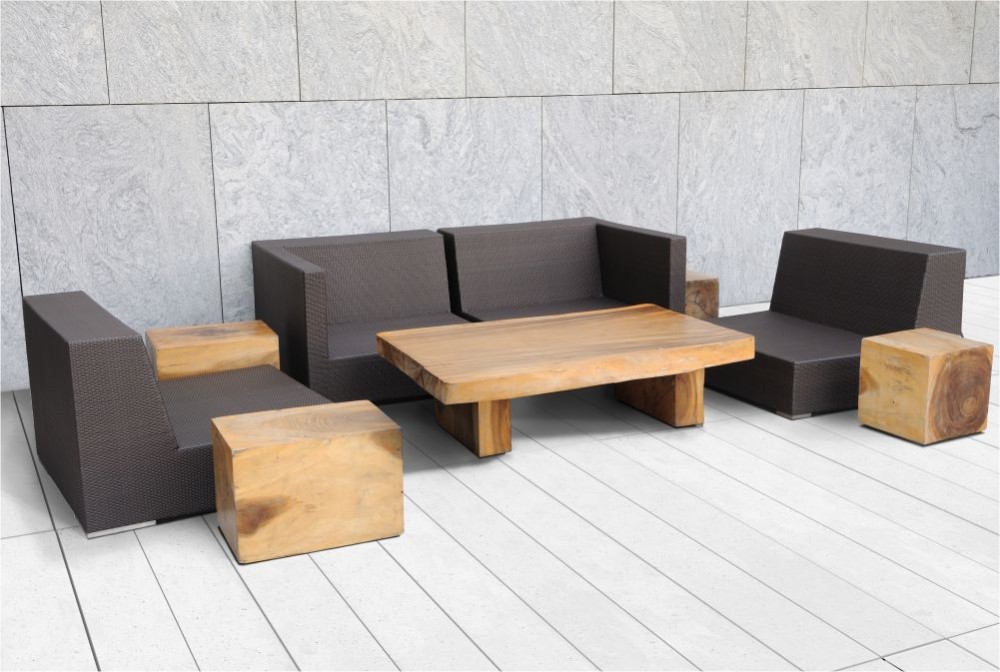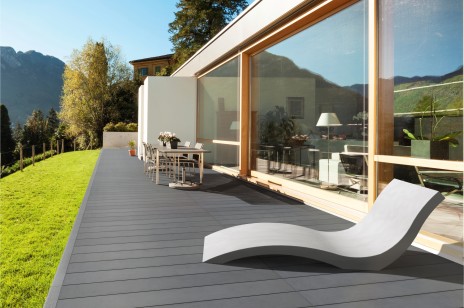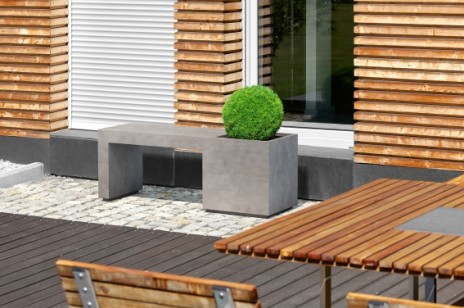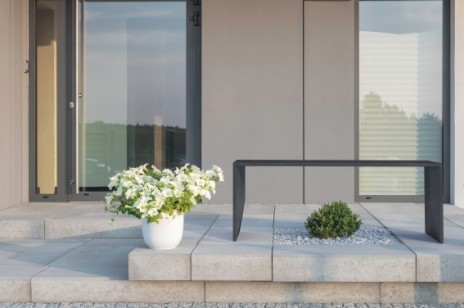Architectural concrete in the garden
More and more often traditional wood, rattan, plastic, metal or glass elements in modern gardens are replaced by more robust and trendy ones – made of architectural concrete. Next to standard concrete products, such as slabs, flower-pots and benches, the space near your house gets filled with designer’s products as benches, stools and even sunbeds.
Until recently the concrete was mainly associated with gray and ugly construction material. It is completely different today. Architectural concrete is very trendy and often chosen by many interior and garden designers. How to use architectural concrete in the garden?
Concrete flower pots
Concrete planters are one of the most popular concrete products used in modern gardens and terraces. Its popularity is connected with a unique resistance to atmospheric conditions. Concrete flower-pots are durable, water-tight, do not become deformed, do not require winter protection, and the weight makes them very stable. If we add to those the raw beauty of the concrete and a good design, it turns out that concrete planters becomes products perfectly composed with modern garden and terrace arrangements.
Seats and sunbeds
Architectural concrete seats and sunbeds are a perfect proposition for modern garden arrangements. They can successfully replace those traditional ones – made of wood, rattan or plastic – as they perfectly fit into simple, geometric projects thanks to simplicity and minimalist style. Wide choice of concrete furniture shapes (from traditional with right angles to circular forms) enables perfect matching to arrangement character. Attention should be drawn to slightly rounded shapes – they soften the hardness of projects where simple lines dominate and become a unique concrete accent in any designed space. Robust and durable, they are resistant to weather conditions, so they are comfortable in use.
Elements of spatial arrangement
Among concrete garden products you can find also decorative elements for spatial arrangements. They usually adapt the form of geometric shapes (cubes and balls) and are available in various sizes, shapes, textures and combinations with other materials (ex. wood), so that they gain versatility and can be successfully used as seats, tables or even ecological fireplaces.
Concrete slabs
The unique climate of every modern garden can be also achieved by concrete slabs. Skilfully composed in green space, they may even become a decorative element.
The market offers a rich selection of such products, however in modernist gardens the most successful are simple, cubic shapes and monochromatic colors. If you care for the impression of naturalness, you should choose products made of real architectural concrete, not imitations.
What is more, the manufacturers offer more and more perfect solutions: the slabs are larger, maintaining low thickness they become quite light. Designing the surface for such spaces, you should remember about the basic rule of minimalism – less means more.
Finally one should say, that contrary to what one may expect, concrete is not an unfriendly and cold material. Outside it behaves just like any other material: cold in the winter and warm in the summer thanks to sunlight. Taking this into consideration and the fact that this material is well matched to nature, very durable and beautiful in its simplicity, you could say it is one of the best raw materials available in the garden.
Every well designed garden should have the same style as the house. And because the modernist architecture oscillates around minimalism, geometric forms and monochromatic colors, the same solutions should be taken into consideration during creation of modern garden arrangements. Fair-faced concrete products will perfectly complete the job.
